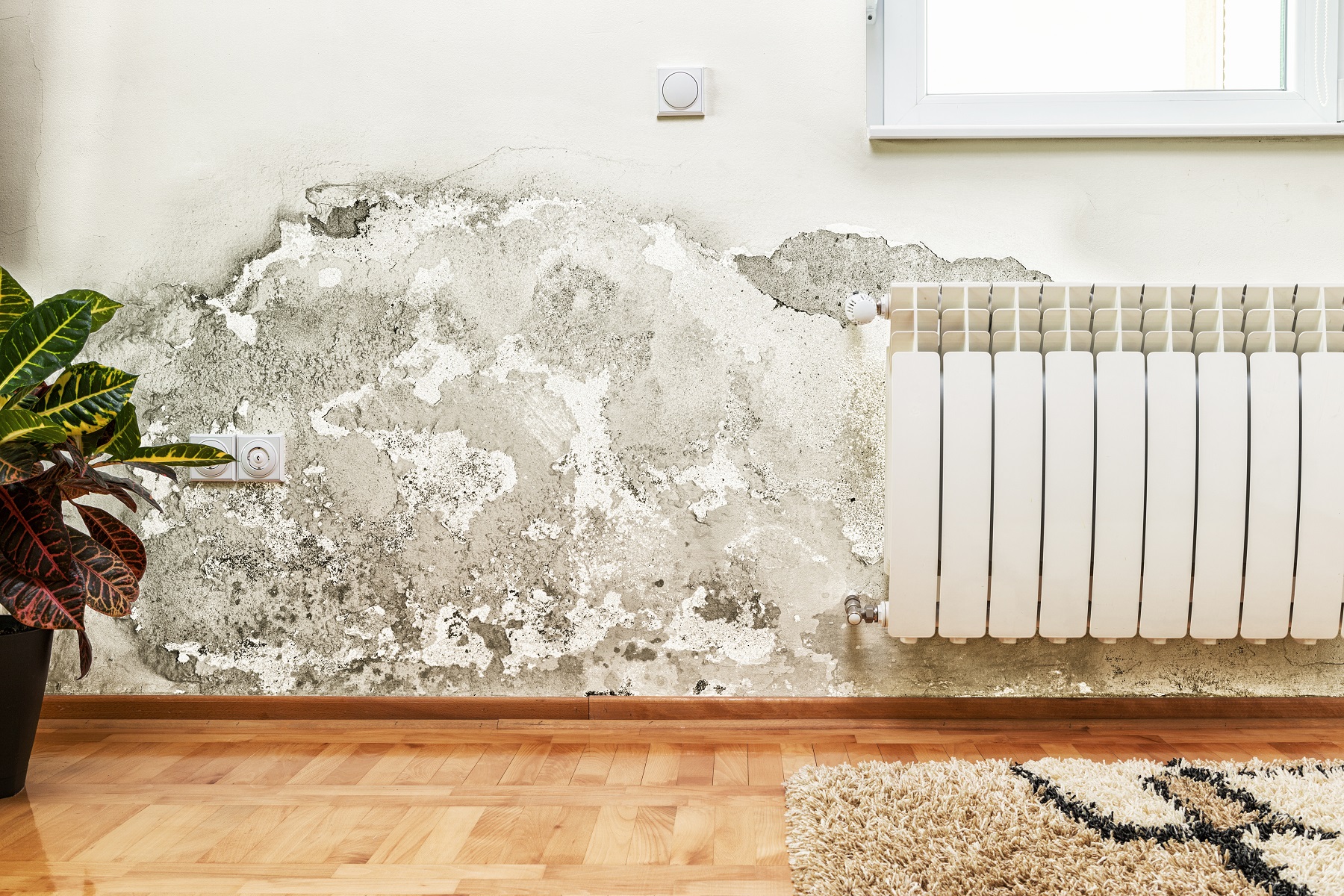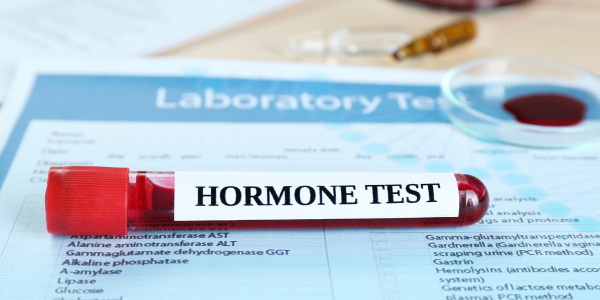

Have you ever left a piece of bread out on your kitchen counter for too long?
If so, you probably saw some blue-ish, green, and grey hairy spots begin to grow. Never mind that sandwich for lunch…
The culprit: mold.
Mold is a fungus that grows through filaments called hyphae. Different types of mold vary in color, shape, and size. But they all have one thing in common – they all need moisture to grow.
Toxic mold can grow indoors and outdoors and can lead to mold-related allergies and illnesses. For some people exposure to mold can lead to a mold illness and could also eventually lead to mold toxicity (aka chronic mold illness). Does everyone exposed to mold react the same? The answer is no! Some people are more susceptible to the effects of mold than others. This is why it is possible for only 1 or 2 household members to have health issues secondary to mold when everyone seems fine.
If you suspect you’ve been exposed to mold, you may have asked yourself questions like –
What are common ways you can be exposed to mold?
How can you test your home for mold toxicity?
What should you do if you’re experiencing mold toxicity symptoms?
I’ll share the functional medicine approach to answering these questions below!
What is mold toxicity?
Mold toxicity is a severe mold illness that occurs after you’re exposed to mold spores that emit toxic substances. Oftentimes spores release these toxins into the air, so you can be exposed by breathing in the toxins. Some people may experience chronic illness after long-term toxic mold exposure. These toxins released by certain molds are called mycotoxins.
However, not all molds are toxic. There are “good” molds as well.
What are common ways of getting mold exposure?
One of the most common ways to get exposed to mold is through water-damaged buildings. The World Health Organization estimates that up to half of the buildings in North America are water-damaged and may likely contain mold. Mold can also be found in your home in areas like air conditioning units, under carpets, wooden furniture, walls, bathrooms, behind washers and dryers and dishwashers, under sinks, and secondary to roof leaks.
The second most common way of getting mold exposure is through certain foods. Mold and mycotoxins can grow on specific crops and contaminate the food chain. These foods include:
- Grains including wheat, barley, oats, rye, rice, and corn
- Meat and milk from grain-fed animals
- Dried fruits
- Cheese
- Coffee
- Wine
- Beer
Other foods that may be contaminated with mold and mycotoxins include:
- Tea
- Nuts
- Seeds
- Spices
- Chocolate
It’s also important to avoid and/or eliminate processed, refined foods that cause inflammation such as industrial seed oils, refined sugar, gluten, and dairy products.
What are the symptoms that you’ve been exposed to mold?
Symptoms range from person to person and may be related to your genetics. For example, 25% of Americans have the HLA-DR gene which makes them susceptible to toxic mold – they experience more severe symptoms compared to the rest of the population.
Some symptoms that indicate toxic mold exposure include:
- Respiratory problems including sneezing, runny nose, shortness of breath, wheezing, chest tightness, sinus congestion, chronic cough, and chronic respiratory tract problems
- Chronic fatigue and weakness
- Neurological symptoms and cognitive problems such as anxiety, depression, sensitivity to light, headaches, vertigo, poor memory, and difficulty concentrating
- Digestive problems including nausea, vomiting, diarrhea, and abdominal cramps
- Metallic taste in the mouth
- Morning stiffness and joint pain
- Tingling and numbness
Others may be highly sensitive to mold toxins and have Chronic Inflammatory Response Syndrome (CIRS) – a term coined by Dr. Ritchie Shoemaker. CIRS is a condition that’s caused by exposure to biotoxins, including mold.
The symptoms above are not specific to only mold toxicity and could be caused by something else. Mold tests will help rule out mold as the cause of your symptoms. Here are ways that you can test for mold in your home.
How can you test your home for mold?
If you want to determine if you’ve been exposed to mold and what type of mold, it’s important to get your environment tested. Here’s a company and two Arizona-based resources that I recommend for my patients:
1. Mold Self Testing Company: Mycometrics
Mycometrics is a company that performs the Environmental Relative Mold Index (ERMI) RMI index and HERTSMI test.
The ERMI was created by the United States Environmental Protection Agency. ERMI analyzes dust that’s settled in our indoor and outdoor environments for mold.
It uses a mold-specific qualitative polymerase chain reaction to determine if 36 mold species are present and calculates a number based on other homes. This index classifies for group 1 and 2 molds:
- Group 1 molds are water damage-related type molds.
- Group 2 molds are common fungal species.
The higher the ERMI number calculated, the more mold is present in the environment. It’s important to note that the index is a scoring system that’s based on the average of around 1,000 homes used in a study to create the ERMI.
The HERTSMI test is a mold test that analyzes dust samples for the “Big 5” mold species – Aspergillus penicillioides, Aspergillus versicolor, Chaetomium globosum, Wallemia sebi, and Stachybotrys chartarum (black mold). Aspergillus, Stachybotrys chartarum, and Chaetomium globosum molds grow well in porous materials like wood, drywall, and particleboard.
After a mold is entrenched in a damp location, it releases mycotoxins, which are naturally occurring toxins and secondary metabolites produced by molds. You can be exposed to mycotoxins by eating contaminated food or from animal products that were made from an animal who consumed contaminated feed. An example of an animal product is milk.
Toxic molds produce mycotoxins like gliotoxin, ochratoxin A, and aflatoxins for example. Mycotoxins can be affiliated with neurological symptoms, immunosuppression, cancer, DNA alteration, and hormone imbalance.
2. Home Environmental Testing Companies
An indoor environmental professional is an industrial hygienist who inspects a wide range of environmental concerns including bacteria, odors, radon, and mold. They determine the problem in the indoor environment and ways to improve the environment for individuals. So in a way, indoor environmental professionals are like a doctor of your home.
Environmental Analytics is an Arizona-based environmental consulting firm that brings an indoor environmental professional to your home to perform an on-site inspection.
Founder of Environmental Analytics, and sick building expert Michael Schrantz advises that you must be careful of companies who call themselves mold testing companies and don’t do a proper job of testing. For example, some companies may only test for mold by taking a direct air sample by walking through your home.
While air sampling is beneficial, you’re not going to be able to detect all mold through an air sample. That’s because not all mold is the same – some molds are heavier than others. Some are stickier than others. If a mold is heavy, it won’t stay airborne for a long amount of time and won’t be detected by the air sample.
Schrantz suggests that in addition to air sampling, other mold testing needs to be conducted.
One example of the test is the qualitative polymerase chain reaction (QPCR) test that measures the ERMI index (this test was mentioned above). The ERMI test takes a dust sample from brushing off a surface or from a vacuum. Multiple dust samples from various areas of the home and even an outdoor sample are collected to determine if mold is coming from indoors or outdoors. The outdoor sample is also treated as the control.
Schrantz describes another test that can look at wall cavity air samples. A professional will drill a ⅜-inch wide hole, place a tube attached to a cassette inside the hole, and draw air through the tube. The cassette is sent to a lab, and the lab can determine if mold is present. The wall cavity is a confined space unlike taking an air sample from a large room.
Green Home Solutions is another Arizona-based company that tests and inspects for mold, determines a mold remediation plan, mold containment, and mold treatment.
Green Home Solutions uses plant-based enzymes (instead of toxic, synthetic chemicals) to break down toxic mold spores, which prevents mold from regrowing.
Let’s explore the functional medicine tests that I order for my patients. If you do not live in Arizona I would recommend looking for a high quality mold testing company in your area. In addition to testing your home, it’s vital you get tested to determine if you have mold illness or CIRS.
What type of functional medicine lab tests can help determine if you have mold exposure?
Mycotoxin testing is used to detect mold metabolites. So what mold metabolites can we test for? Here are the ones I look for in my practice:
- Aspergillus: the main metabolites include Ochratoxin, Aflatoxin, and Gliotoxin.
- Penicillum: the main metabolites include Sterigmatocystin and Mycophenolic Acid.
- Fusarium: the main metabolites include Enniatin B and Zearalenone
- Chaetomium Globosum: the main metabolites include Chaetoglobosin A
- Stachybotrys: (aka toxic black mold) is commonly found in water-damaged buildings. The main metabolites include Riordin E and Verrucarin A.
So what are the effects of mycotoxins and where are they typically found?
Ochratoxin A (OTA) can affect the kidneys, immune system, and neurological system, and is produced by molds in the Aspergillus and Penicillum families. Exposure is primarily through water damaged buildings, but can also be through certain foods. Aflatoxin is also primarily from Aspergillus and is found mostly in foods. It is a carcinogenic substance and can also cause liver damage, mental impairment, and immune suppression. Gliotoxin is typically from aspergillus exposure, and targets the immune system and can also lead to neurological symptoms.
Sterigmatocystin (STC) is produced from several species of mold such as Aspergillus, Penicillium, and Bipolaris. STC is considered to be carcinogenic, particularly in the cells of the GI tract and liver. STC has also been found in the dust from damp carpets, and is also a contaminant of many foods including grains, corn, bread, cheese, spices, coffee beans, soybeans, pistachio nuts, and animal feed.
Mycophenolic Acid (MPA) produced by the Penicillum fungus that can suppress the immune system. MPA exposure can increase the risk of opportunistic infections.
Roridin E is produced by the mold species Fusarium, Myrothecium, and Stachybotrys. It is frequently found in buildings with water damage but can also be found in contaminated grain. This is a very toxic compound that can cause neurological damage, immunosuppression, endocrine disruption, cardiovascular problems, and gastrointestinal distress.
Zearalenone (ZEA) is mycotoxin that is produced by the mold species Fusarium, and has been shown to be toxic to the liver, blood and immune system. ZEA exposure is mostly through water damaged buildings, although ZEA is commonly found on several foods in the US, Europe, Asia, and Africa.
Citrinin is elevated with multiple different molds. It can lead to suppression of the immune system, kidney damage, and is a carcinogen as well.
If your mycotoxin test is positive, it is essential to get the indoor environments where you spend a lot of time tested including your office, school, gym, or home, to remove exposure.
What can you do to your home to help reduce mold exposure?
Mold is found in many sneaky places in your home. Here are different ways to remove and prevent future mold exposure once your environment has been cleared of mold and remediated:
- Remove mold from carpet: A high-efficiency particulate arrestance (HEPA) vacuum cleaner can be used to remove mold spores. These are different from regular vacuum cleaners that remove mold spores from the carpet but then deposit them back into the air as you continue to use your vacuum.
- Remove mold from soft furnishing fabrics and clothing: Mold can be found on your clothing and soft furnishings such as your sofa. I recommend using chemicals that kill bacteria, such as diluted bleach and vinegar. Borax (sodium borate) is a mineral that can also remove bacteria. You can combine borax with water and soak your clothing in it. Be sure not to get this mixture into your eyes or mouth.
- Removing mold from wooden furniture and walls: Just like your clothing, I recommend that a borax mixture be used to clean mold from most furniture. Some surfaces like kitchenware coated with cooking oil can be hard to use borax on, so I recommend washing the cookware with soap and water before cleaning with borax.
To prevent mold from regrowing in your home and to prevent re-exposure to mold, I recommend:
- Cleaning your home regularly while wearing personal protective equipment (PPE) such as gloves, an N-95 respirator, and protective clothing
- Remove items containing mold and place them in a doubled-up plastic bag (one plastic bag inside another).
- Keeping in mind that mold thrives in environments that include moisture, condensation, and humidity. Common areas include your air conditioning units, carpets, and holes in the walls.
Consider hiring a professional to help you determine the next right step for you and your family, and to help you avoid the consequences of mold toxicity.
Concerned that you have mold toxicity? Here’s how we can help.
Mold illness can be severe and shouldn’t be taken lightly. It’s important to understand if mold is causing your symptoms to determine a health protocol and the next steps in mold toxicity treatment.
If you think you’ve been exposed to mold or you’re experiencing mold toxicity symptoms, getting tested, diagnosed, and treated for mold illness can help you turn your health around. If you’re based in Arizona, you can schedule an appointment here.
Here’s to your health,
Dr. Emily Parke
Share:
Dr. Emily Parke
Social Media
Most Popular Posts
Subscribe To Our Newsletter
Related Posts

New Podcast Episode: My journey into functional medicine + what I’ve learned
I’m excited to share that I recently joined DeLo for Episode 165 of the On the DeLo podcast! In this conversation, we explored my journey

Understanding the Essential Labs for Women on Hormone Replacement Therapy (HRT)
So what are the minimum labs we’re looking at when we do hormone replacement therapy? We obviously want to look at an estrogen level, so

How to figure out the right amount of HRT in women
What about checking lab values when you’re on hormone replacement therapy? I do find it to be helpful, but we also want to consider symptoms.

Did you know there’s a difference between food allergies, sensitivities, and intolerances?
Did you know that there’s a difference between food allergies, food sensitivities and food intolerances? Food allergies, the reactions tend to happen pretty immediately and
